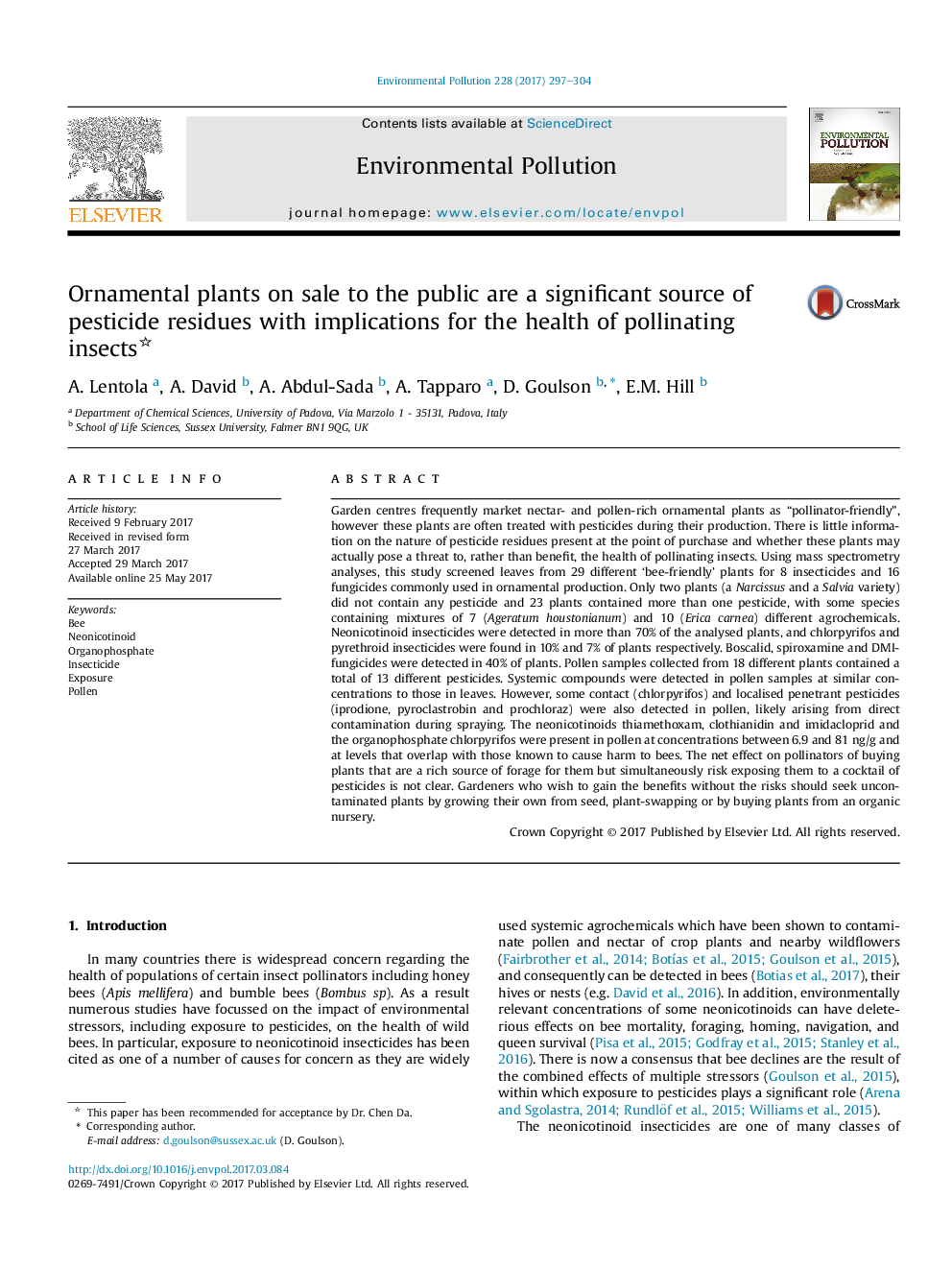| کد مقاله | کد نشریه | سال انتشار | مقاله انگلیسی | نسخه تمام متن |
|---|---|---|---|---|
| 5748877 | 1619145 | 2017 | 8 صفحه PDF | دانلود رایگان |
- We quantify pesticide loads in ornamental plants sold as “bee-friendly”.
- A wide range of pesticides were found in leaves, pollen and nectar.
- 70% of plants contained neonicotinoid insecticides.
- Concentrations of some pesticides were sufficient to pose a risk to bees.
Garden centres frequently market nectar- and pollen-rich ornamental plants as “pollinator-friendly”, however these plants are often treated with pesticides during their production. There is little information on the nature of pesticide residues present at the point of purchase and whether these plants may actually pose a threat to, rather than benefit, the health of pollinating insects. Using mass spectrometry analyses, this study screened leaves from 29 different 'bee-friendly' plants for 8 insecticides and 16 fungicides commonly used in ornamental production. Only two plants (a Narcissus and a Salvia variety) did not contain any pesticide and 23 plants contained more than one pesticide, with some species containing mixtures of 7 (Ageratum houstonianum) and 10 (Erica carnea) different agrochemicals. Neonicotinoid insecticides were detected in more than 70% of the analysed plants, and chlorpyrifos and pyrethroid insecticides were found in 10% and 7% of plants respectively. Boscalid, spiroxamine and DMI-fungicides were detected in 40% of plants. Pollen samples collected from 18 different plants contained a total of 13 different pesticides. Systemic compounds were detected in pollen samples at similar concentrations to those in leaves. However, some contact (chlorpyrifos) and localised penetrant pesticides (iprodione, pyroclastrobin and prochloraz) were also detected in pollen, likely arising from direct contamination during spraying. The neonicotinoids thiamethoxam, clothianidin and imidacloprid and the organophosphate chlorpyrifos were present in pollen at concentrations between 6.9 and 81Â ng/g and at levels that overlap with those known to cause harm to bees. The net effect on pollinators of buying plants that are a rich source of forage for them but simultaneously risk exposing them to a cocktail of pesticides is not clear. Gardeners who wish to gain the benefits without the risks should seek uncontaminated plants by growing their own from seed, plant-swapping or by buying plants from an organic nursery.
318
Journal: Environmental Pollution - Volume 228, September 2017, Pages 297-304
